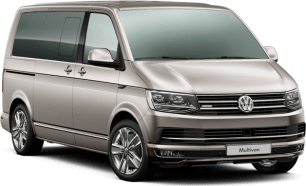This needs a very solid breakdown because there is a lot to know about this particular car. Starting with sliding doors on both sides, which are electrically operated, and there are buttons on the remote to open and close them.
There is a phenomenal amount of storage inside. The driver's door alone has two storeys of pockets to carry plenty of different-sized and shaped items. There's so many places to put things you can almost get decision paralysis.
Down on the floor between the seats is a handbrake that seems to have been borrowed from a helicopter, but it's that long because it's attached right down on the carpet. That means you can walk from the third row all the way through the van, flip up the armrests on either of the captain's-chair style seats and plonk yourself down. Or vice versa.
The second row features two separate captain's chairs (again) that are set on rails. You can slide them back and forth and - most impressively - swivel them through 180-degrees to face the third row so you've got yourself a meeting room on wheels, complete with the USB-C ports on one side of the back row, just above a double-cupholder set up. The seat belts for the second row are integrated into the seats themselves, which is why you can use them in motion.
Incidentally, the back row can also slide back and forth and can fold down as well. There are cupholders either side of the row, too (the previously mentioned double along with a generous-sized one that came with its own thermal cup...I think that's what it was) and with the aforementioned USB ports.
On top of all that, there are window blinds, little porthole windows in the sliding door windows themselves, a place to put, say, a clipboard on the dash in front of you and a cupholder with two USB-C ports next to the shifter.
Being a van, the total cargo volume is gigantic. If you hoof the seats out, the cargo area is 2.532 metres by 1.627 (1.220m at the wheelarches). The height is 1.32m, meaning if you're under five feet tall, you can walk without bending over. Suffice it to say, you can fit an enormous amount of stuff in.
If there's still not enough room, you can tow 2500kg with a braked trailer and 750kg unbraked. A two-bar roof rack will hold a further 100kg and a three-bar 150kg. Gross vehicle mass is 3080kg from a 2266kg unladen weight, meaning a maximum payload of 814kg.
That's enough stats on practicality to keep you going.

.png)